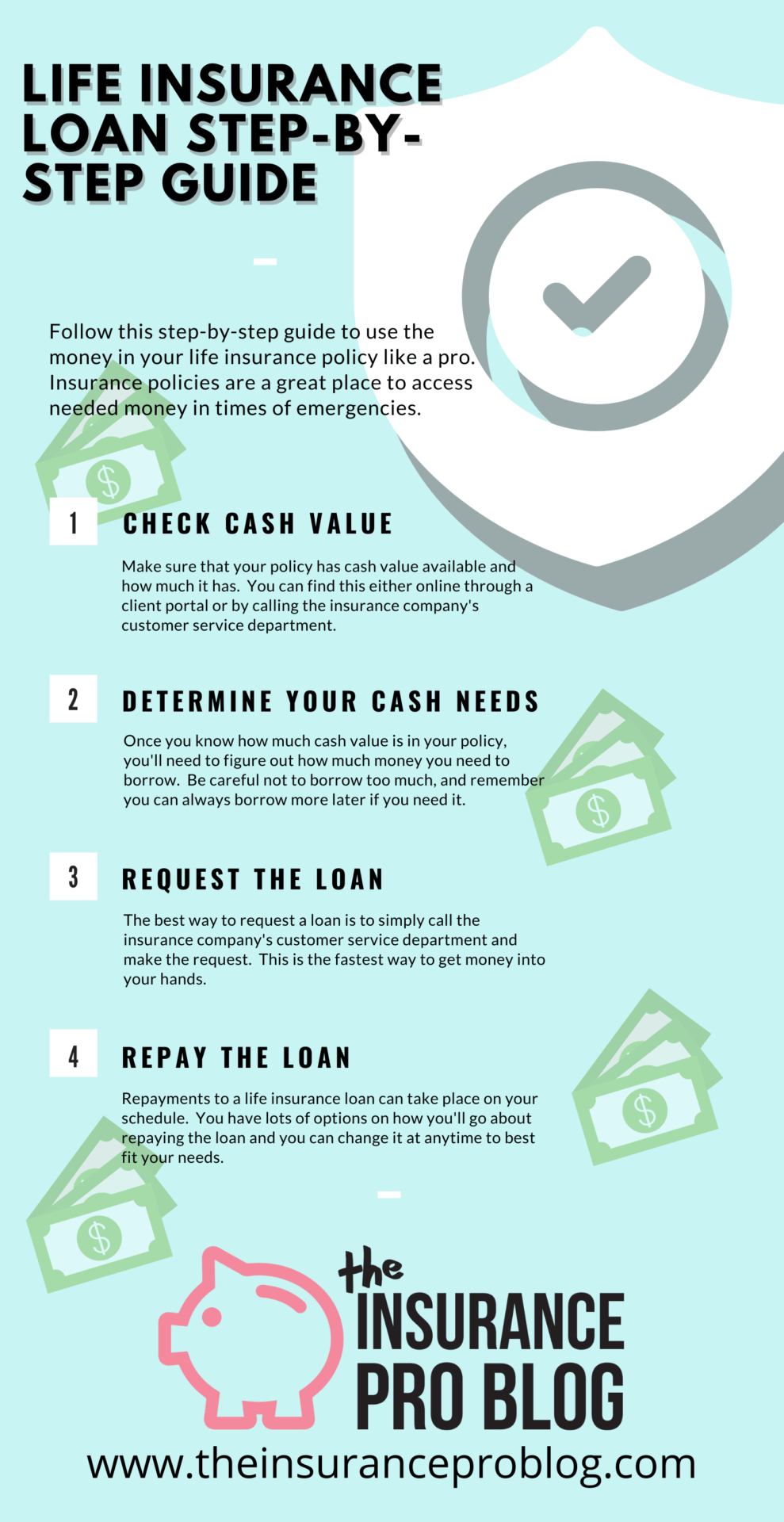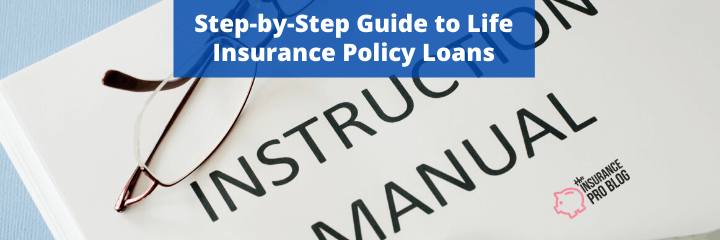Podcast: Play in new window | Download
With COVID-19 shutting down lots of major business activity in the United States, it's no surprise that a lot of people are experiencing fluctuations in cash flow. For many, the exact impact this will have depends entirely on the length of the current shut down.
For those out of work, working reduced hours, or those with businesses that are experiencing a decline in business we're now seeing the upside to that boring rainy day fund.
One such place people can go in an emergency such as this to acquire needed money to bridge the pandemic is life insurance, specifically whole life insurance and universal life insurance policies that build cash value (sorry term buyers, you're gonna have to look elsewhere).
And since there's likely a high interest in taking a loan from a life insurance policy that you own, I figured I'd take time to detail the life insurance loan process to help people navigate this process a little better.
Step 1 Check your Available Cash Value

The first step in taking a life insurance loan is deciding how much you need and how much money you have available in your policy. If you registered for online access to your policy values, just about all life insurers will provide you with a cash value summary report that usually includes a maximum loan available section. You can borrow any amount up to this maximum.
If you don't have online access to your policy you can always call the life insurance company's customer service line. You can generally go through an automated service that will ask for your policy number and a few other personal identifying pieces of information before reading off your policy values to you.
If the automated service is available, there's no need to wait on hold for a live person to accomplish the task of looking up your policy values.
Step 2 Determine the Amount you Need to Borrow
When deciding how much you want to borrow against your life insurance policy, I'd generally recommend that you aim low. Keep in mind that you can always borrow more if you decide the initial amount wasn't enough.
If you decide later that you need more money, you'll simply repeat the steps detailed below to initiate a loan request. You should be somewhat careful to avoid borrowing for non-essential expenses you have to meet while cash is tight.
Step 3 Request the Loan
The easiest and quickest way to initiate the loan process is to call the life insurance company and request a loan from a customer service representative. Some insurers allow loan requests online in the same portal mentioned above that you can use to check your policy values. If this is available, this is another great option.
Few life insurers require an actual loan request form these days, and you want to avoid that if at all possible. Additional paperwork always slows down the process.
There is no creditworthiness you need to prove nor any loan application you'll need to fill out. Life insurance policy loans are a contractual feature that's available to all policyholders whenever cash values are available.
They are not dependent on any evaluation of your likelihood to repay them. Life insurance policy loans do not show up on your credit report and they do not affect your credit for loans you apply for with a bank.
Generally speaking, loan requests take about a week to process. Given the volume of loan requests likely taking place right now, you should absolutely budget a few more days in processing time.
Some insurers will transfer loan money via EFT directly to your bank account. They will require banking information to do this (often a copy of a voided check, some will also require an EFT form be filled out and signed by you).
Other insurers will insist on mailing or wiring the money (wire fees usually apply). If receiving the check by mail, make sure that the insurance company has your updated mailing address on file.
Once you receive the loan you're free to do with the money whatever you wish. If you plan on repaying the loan (the majority of people who take a loan in emergency times like this) then you should at least be thinking about how you will go about repaying the loan.
Step 4 Repaying the Loan
Life insurance loans do not come with a fixed repayment schedule. You won't receive a repayment coupon booklet, nor will you regularly receive loan repayment notices each month from the life insurer. The most you'll receive regarding the loan is an interest accumulation statement that comes around the time of your policy anniversary date. You'll have the option to either pay the accrued interest or add it to the outstanding loan balance.
When you make loan repayments, you'll almost always make a 100% payment to the loan balance. You can make repayments in whatever amount under whatever schedule you want to.
One option is to send a check to the life insurer to repay the loan. You can send checks in whatever interval is convenient to you (e.g. monthly, quarterly, etc.). You'll simply send the check to the life insurance company's address for payments and note that this is a loan repayment on your policy. The insurer will apply the payment to paying down the loan balance.
You are free to vary the amount as you want to. For example, maybe you repay $1,000 one month, $500 the next month, and $1,500 the month after that. You're also free to skip intervals if need be.
For example, you make a payment in May, but skip June and July, and then start payments again in August. The insurer does not care when and how much you send as loan repayment. They'll apply whatever payment you send whenever you send it. There is no penalty for doing this.
You can also opt to establish an automated repayment with the life insurance company through an electronic funds transfer (EFT). This means you'll set up a re-occurring draft of some fixed amount against your bank account to go towards the repayment of your loan. You do not have to set this up at loan origination.
So you could make repayments by check in the beginning and then establish the EFT once you're more certain about your income. You're also free to cancel the EFT at any time. So if you establish an EFT but things take a negative turn for you, you can cancel the EFT to suspend loan repayments.
There is no penalty for making varied payments to a policy loan and there is no penalty for paying the loan off early or for making no regular payments to the loan.
Life Insurance Loan Interest
The interest rate charged on your loan will depend on the policy you own and/or the insurance company. Some insurers charge fixed interest rates, while others have variable rates on life insurance loans. You'll know the rate charged when you originate the loan.
All you need to do is ask the insurance company what it is. You'll also see the loan interest rate when you receive your interest charge with or around the time of your anniversary statement.
If you have a variable loan interest rate, the policy contract will detail how and when the rate can change. Usually, changes can only occur during a policy anniversary.
Bottom Line
Life insurance loans are a very efficient way to acquire needed cash during a crisis. The process might appear intimidating, especially for anyone who has never taken a loan against a life insurance policy. But the good news is the process is simple and comes with a lot of flexibility concerning repayment. Many people use loans every day to meet cash needs.
If you find yourself in a bit of an income crisis at the moment due to the COVID lockdown, and you happen to own a life insurance policy with cash value, consider yourself lucky enough to have the option of using it as a safety net during these unprecedented times.



I am curious – it seems that cash value life insurance is still safe during this pandemic, unlike stocks and other financial assets. And it cash value life insurance certainly performed over 2008-2009 as well. However, should we be worried if a lot of people start dying from the pandemic in terms of insurers’ financial health and having to pay out claims earlier than actuarially expected?
Hi KC,
While anything is possible, current trends in Covid-19 mortality do not suggest a spike in life insurance claims that are likely to cause financial stress on most major life insurers.
I have been doing this but I recently learned about lines of credit against cash values issued by banks. The interest rates are showing 1.75% than what I have been getting from the insurance company. I could have saved a few thousand dollars by using those lines of credit instead of taking loans from the insurance company.
Yup pledging life insurance as collateral with a bank for a more traditional loan can be an option–and often with very favorable borrowing terms. It does remove a lot of the repayment flexibility, but if you weren’t really focusing on that, it’s not such a big deal.
It’s also important to understand going in that there is a traditional application process and credit worthiness evaluation. Additionally, this loan would be logged with credit bureaus and could impact future attempts to borrow money.
So long as you understand those unique elements versus a standard life insurance loan and things are still favorable, this is certainly worth pursuing. We have several clients who have pledged life insurance policies for a loan or line of credit with a bank.
Just learned something new – that you can use your policy to collateralize a loan with a regular bank like that! Follow-up thought as I attempt to bend the rules: can you double dip on that collateralization? i.e. Get a loan/LoC with a bank and then also take out a loan thru the insurance company. Is there a method by which one or the other would know if the policy has already been used as collateral?
Yup there is a mechanism in place that stops you from doing this. In order to pledge the policy as collateral you must complete a collateral assignment that the insurance company keeps on record until you repay the loan with the bank. This will prevent you from borrowing against the policy in the amount that you pledged to the bank.
Since you are borrowing your own money, the true cost of the loan is not the charge rate. It is the credit rate you would have earned without loans + the difference in the charge rate vs the credit rate on values pledged against the loan.
If these three rates were all 5%, then 5% would be your true loan cost. If you expected a credit rate of 6% without loans and there is 0% difference in the loan charge and credit rates then your true cost is 6%. If the loan charge rate were @% higher then the 2% + 6% results in an 8% true loan cost.
how can you get proof if you took out a loan back in 1998? i dont know about this loan i took out?
Hi Sandra, the insurance company might have a record of it in the policy transactions. You should call the insurance company and ask if they have a transaction history.